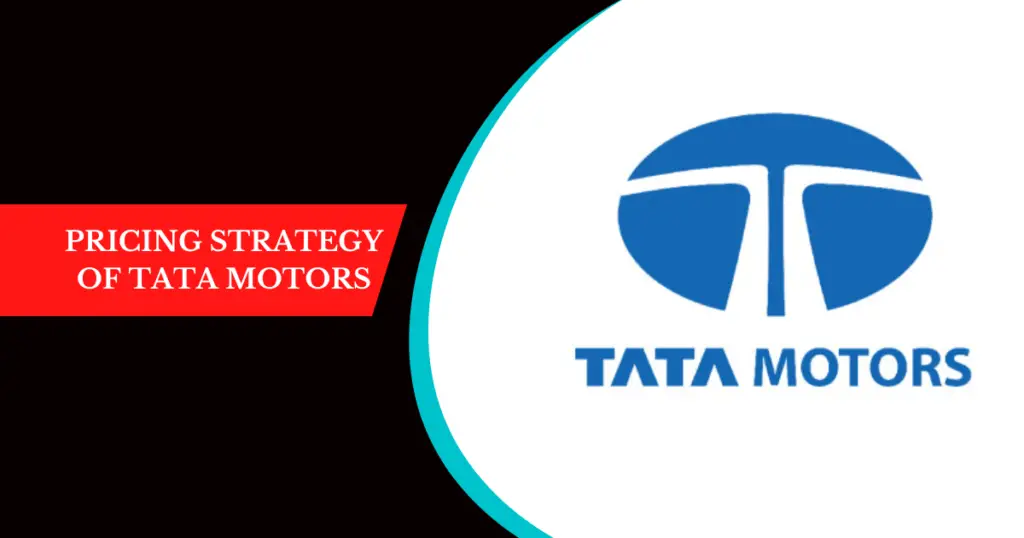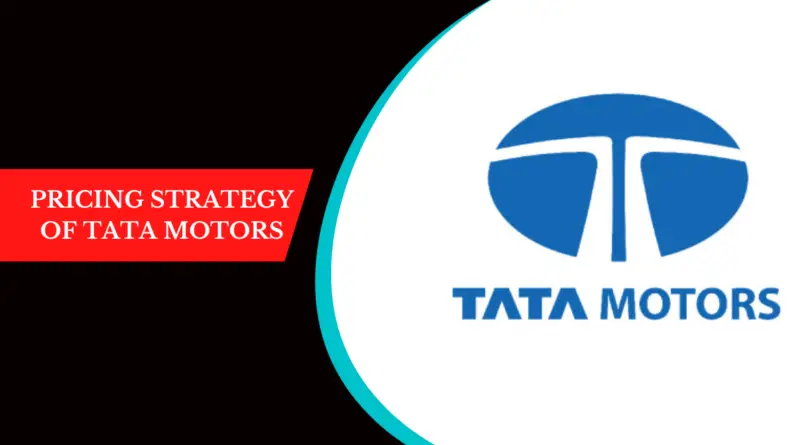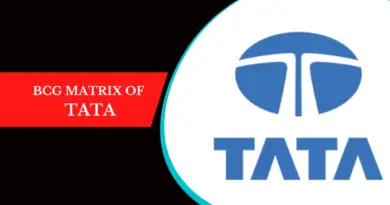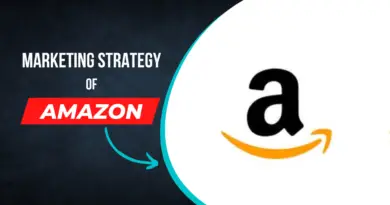Pricing Strategy of Tata Motors: A Comprehensive Overview
Tata Motors, a leading player in the global automotive industry, is renowned for its extensive range of vehicles, from compact cars to commercial trucks. Its pricing strategy is a critical factor that has contributed to its success, helping it carve a niche in both domestic and international markets. The company’s pricing strategy is multifaceted, aiming to balance affordability with quality, cater to diverse customer segments, and maintain competitiveness in an increasingly dynamic market.
This blog delves into the various aspects of Tata Motors’ pricing strategy, exploring how it adapts to market conditions, customer preferences, and industry trends. It also highlights the company’s key tactics, including market penetration, cost leadership, and product differentiation.
Pricing Strategy of Tata Motors

1. Market Penetration Strategy
One of Tata Motors’ primary pricing approaches is market penetration, particularly in its home market of India. This strategy involves setting lower prices for new products to quickly attract a large customer base, boost sales volumes, and capture market share. By offering affordable vehicles, Tata Motors has made it possible for a wide range of customers, especially first-time buyers, to purchase their own cars.
For example, the introduction of the Tata Nano in 2008 demonstrated this approach vividly. With a starting price of just ₹100,000, the Nano was marketed as the “world’s cheapest car,” designed to appeal to budget-conscious consumers in India. Although the Nano did not achieve the long-term success Tata envisioned, it highlighted the company’s focus on making car ownership more accessible through aggressive pricing.
2. Cost Leadership Approach
Tata Motors has also positioned itself as a cost leader in several vehicle segments, including commercial vehicles and budget-friendly passenger cars. By optimizing production processes, sourcing raw materials at lower costs, and leveraging economies of scale, the company is able to offer its vehicles at competitive prices without sacrificing quality.
This cost leadership strategy has been instrumental in Tata Motors’ success in the commercial vehicle sector, where it faces stiff competition from global giants like Ashok Leyland, Volvo, and Mahindra. The company’s focus on cost efficiency allows it to maintain a pricing edge, offering durable and reliable vehicles at prices that undercut its rivals, particularly in the price-sensitive Indian market.
3. Pricing Based on Market Segmentation
Another key component of Tata Motors’ pricing strategy is market segmentation. The company recognizes that its customers are diverse, ranging from individuals purchasing their first car to businesses in need of heavy-duty trucks. As such, Tata Motors tailors its pricing to meet the needs of different segments.
In the passenger car segment, Tata Motors offers a wide range of vehicles with varying price points, targeting different income groups. For example:
- Tata Tiago and Tata Tigor are positioned as affordable vehicles for middle-class buyers.
- Tata Nexon and Tata Harrier cater to customers looking for premium, feature-rich SUVs.
- The Tata Safari, a more luxurious offering, targets customers in the higher-income bracket, who are willing to pay a premium for advanced features and enhanced comfort.
In the commercial vehicle segment, Tata Motors provides a wide variety of trucks, buses, and light commercial vehicles (LCVs), with pricing that reflects the specific needs of small businesses, large corporations, and government entities. This segmentation-based pricing allows the company to maximize revenue by catering to both budget-conscious and premium customers.
4. Value-Based Pricing
Tata Motors employs value-based pricing for several of its products, especially in the mid- to high-end passenger vehicle segments. This strategy involves setting prices based on the perceived value that a product offers to the customer, rather than just production costs. Vehicles like the Tata Nexon EV and Tata Harrier are priced based on their advanced technology, safety features, design, and overall customer experience.
For instance, Tata’s electric vehicle (EV) offerings, including the Tata Nexon EV, are priced higher than their internal combustion engine (ICE) counterparts. However, customers perceive these models as delivering greater long-term value due to lower running costs, government incentives, and environmental benefits. By focusing on the overall value proposition, Tata Motors is able to justify higher prices for its premium models while maintaining customer satisfaction.
5. Geographical Pricing Strategy
Tata Motors also adapts its pricing strategy based on geographic considerations. The company operates in a wide array of international markets, including Europe, Africa, Southeast Asia, and Latin America, each with its own economic conditions, competitive landscape, and consumer preferences.
In developed markets like the UK and Europe, Tata Motors (through its Jaguar Land Rover subsidiary) positions itself as a premium brand, with pricing that reflects its luxury offerings. However, in emerging markets like Africa and Southeast Asia, Tata Motors adopts a more competitive pricing model, offering vehicles that deliver durability and reliability at affordable prices to meet local needs.
For its domestic market, Tata Motors often leverages geographical pricing by offering region-specific discounts, financing options, and promotions to attract more buyers in different states or cities. These localized strategies enable Tata Motors to adapt to varying economic conditions and regulatory frameworks.
6. Promotional Pricing and Discounts
In addition to its core pricing models, Tata Motors frequently uses promotional pricing tactics, such as seasonal discounts, exchange bonuses, and zero down payment schemes, to boost sales during key periods. For instance, during festive seasons like Diwali and Dussehra, Tata Motors often offers significant discounts or cash back offers on popular models to drive up sales.
Tata Motors also collaborates with financial institutions to offer competitive financing options and low-interest loans, making it easier for customers to purchase vehicles without the burden of high upfront costs. Such promotional pricing strategies not only help Tata Motors increase short-term sales but also improve customer loyalty by making vehicle purchases more affordable.
7. Dynamic Pricing in Response to Competition
Tata Motors continuously monitors its competitors and adjusts its pricing accordingly. In the Indian automotive market, where competition is fierce, the company often revises prices to stay in line with market trends. For example, when competitors like Maruti Suzuki or Hyundai launch new models at competitive prices, Tata Motors may respond by offering limited-time price cuts or introducing new variants with additional features at the same price point.
This dynamic pricing approach helps Tata Motors remain agile and responsive to market changes, ensuring that it stays competitive without sacrificing profitability.
8. Sustainability and Long-Term Focus
Finally, Tata Motors’ pricing strategy reflects its commitment to long-term sustainability. As the automotive industry transitions to greener, more energy-efficient technologies, Tata Motors is gradually shifting its focus toward electric and hybrid vehicles. While these vehicles currently carry a premium price, Tata Motors is betting on economies of scale and government incentives to reduce costs over time, making these technologies more accessible to the mass market.
By focusing on sustainable mobility and planning for future shifts in consumer preferences, Tata Motors is ensuring that its pricing strategy aligns with long-term industry trends.
Conclusion
Tata Motors’ pricing strategy is a well-balanced blend of market penetration, cost leadership, value-based pricing, and dynamic adjustments in response to competition. By carefully segmenting the market, focusing on customer value, and adapting to geographic and competitive conditions, Tata Motors has built a strong foundation for growth in both domestic and international markets. As the automotive industry continues to evolve, particularly with the rise of electric vehicles and green technology, Tata Motors’ pricing strategy will play a critical role in maintaining its competitive edge and driving future success.



